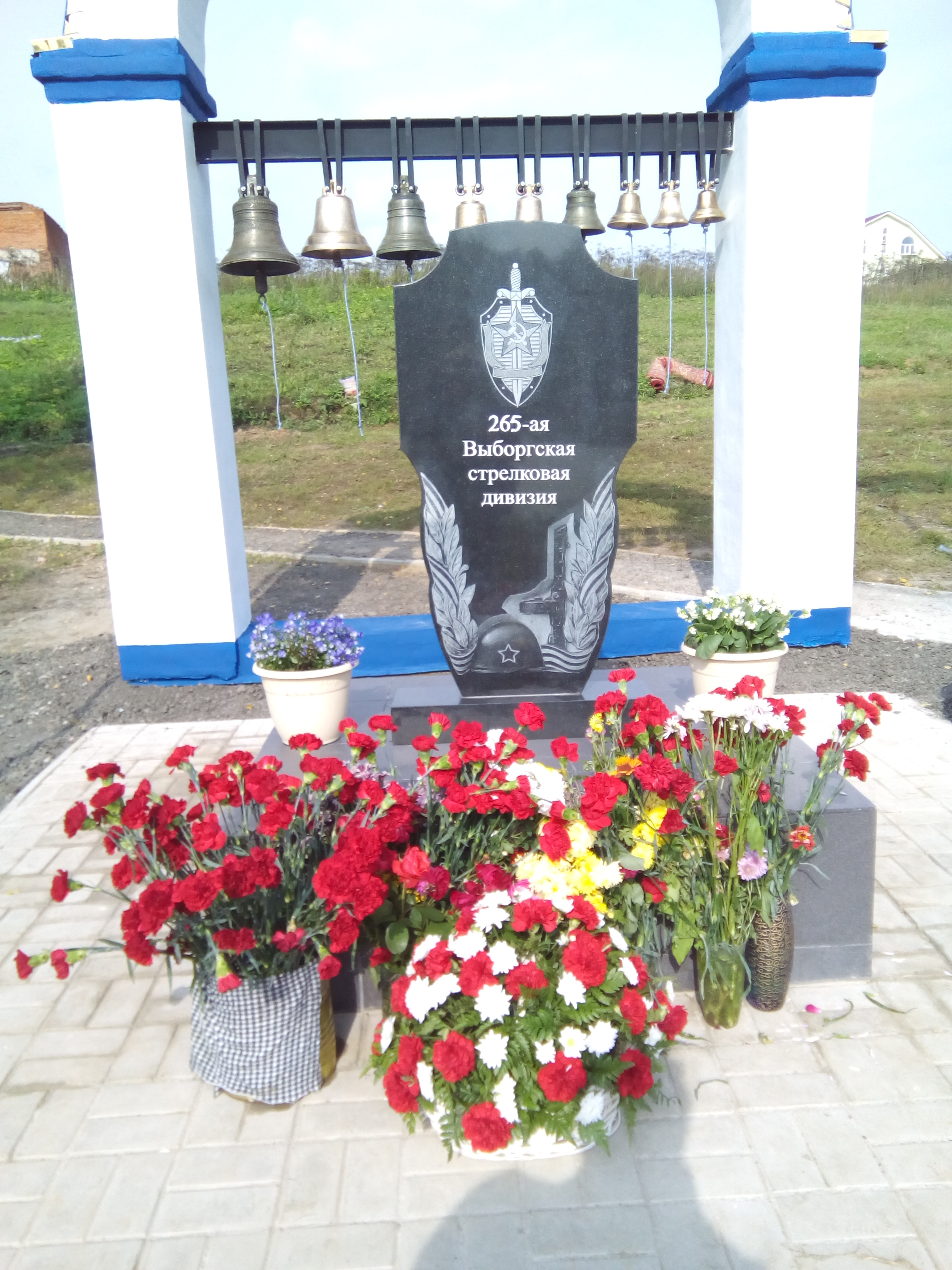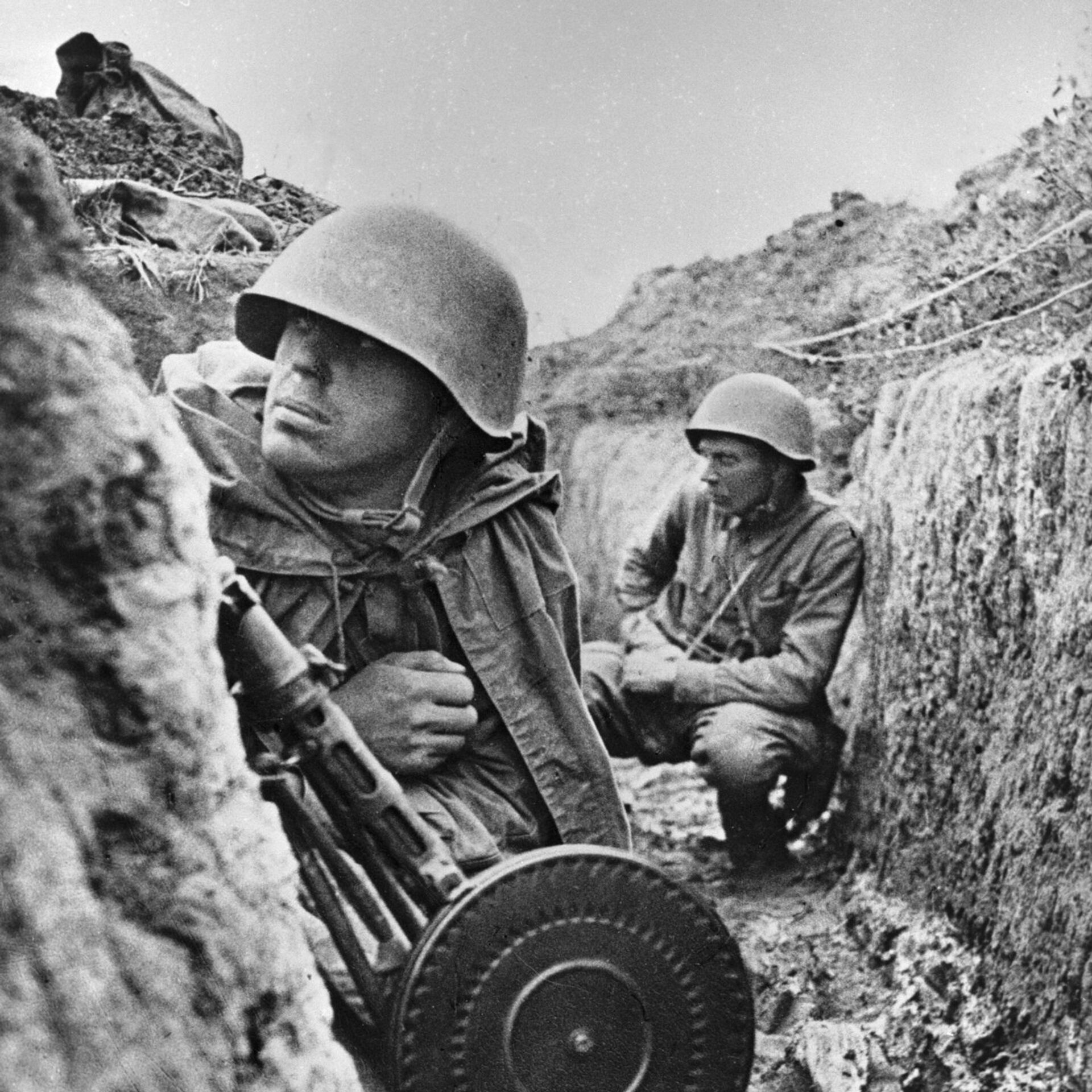|
265th Motor Rifle Division
The 265th Motor Rifle Division () was a motorized infantry division of the Soviet Army during the Cold War. The division traced its heritage back to the 265th Rifle Division, which was formed in mid-1941 from an NKVD division. The 265th fought in the Continuation War and the siege of Leningrad through 1944 and the Battle of Berlin in 1945. Postwar, it was withdrawn to the Soviet Union and downsized into a rifle brigade before being expanded into the 71st Mechanized Division in 1953. It was relocated to Vilnius and converted into the 119th Motor Rifle Division in 1957 before relocating to the Soviet Far East in 1964 and being renumbered as the 265th Motor Rifle Division. It spent the rest of its career in the Far East and was downsized into a storage base in 1989. History World War II The 265th Rifle Division began forming on 26 June 1941 in the Moscow Military District as the 17th NKVD Mountain Division. It was one of the fifteen NKVD divisions that began forming on 26 Jun ... [...More Info...] [...Related Items...] OR: [Wikipedia] [Google] [Baidu] |
Soviet Union
The Soviet Union,. officially the Union of Soviet Socialist Republics. (USSR),. was a transcontinental country that spanned much of Eurasia from 1922 to 1991. A flagship communist state, it was nominally a federal union of fifteen national republics; in practice, both its government and its economy were highly centralized until its final years. It was a one-party state governed by the Communist Party of the Soviet Union, with the city of Moscow serving as its capital as well as that of its largest and most populous republic: the Russian SFSR. Other major cities included Leningrad (Russian SFSR), Kiev (Ukrainian SSR), Minsk ( Byelorussian SSR), Tashkent (Uzbek SSR), Alma-Ata (Kazakh SSR), and Novosibirsk (Russian SFSR). It was the largest country in the world, covering over and spanning eleven time zones. The country's roots lay in the October Revolution of 1917, when the Bolsheviks, under the leadership of Vladimir Lenin, overthrew the Russian Provisional Government ... [...More Info...] [...Related Items...] OR: [Wikipedia] [Google] [Baidu] |
265 Vyborgskaya Sd
65 may refer to: * 65 (number) * ''65'' (film), an upcoming American science fiction thriller film * One of the years 65 BC, AD 65, 1965, 2065 * A type of dish in Indian cuisine, such as Chicken 65, Gobi 65, or Paneer 65 {{Numberdis ... [...More Info...] [...Related Items...] OR: [Wikipedia] [Google] [Baidu] |
2nd Baltic Front
The 2nd Baltic Front (russian: 2-й Прибалтийский фронт) was a major formation of the Red Army during the Second World War. History The 2nd Baltic Front was formed on October 20, 1943 as a result of the renaming of the Baltic Front, itself a successor of the Bryansk Front 10 days earlier. From 1 to 21 November 1943, the left wing of the Front took part in the Polotsk–Vitebsk Offensive. In January-February, the front participated in the Leningrad–Novgorod Offensive of 1944. During the Staraya Russa-Novorzhev Offensive, the Front troops reached Ostrov, Pushkinskiye Gory and Idritsa. In July 1944, the Rezhitsa–Dvinsk Offensive was carried out and the Front advanced 200 km to the west. In August it conducted the Madona Offensive, during which it advanced another 60-70 km along the northern shore of the Daugava River and freed the city of Madona, a major junction of railways and highway roads. In September-October 1944, during the Baltic Offensive, ... [...More Info...] [...Related Items...] OR: [Wikipedia] [Google] [Baidu] |
7th Rifle Corps
The 7th Rifle Corps (''7th ck'') was a corps in Red Army and Soviet Armed Forces, before and during The Great Patriotic War/World War II. History 1st formation The 11th Congress of the Russian Communist Party (Bolsheviks) adopted a resolution on the strengthening of the Red Army. It demanded to establish a strictly organized military, educational and economic conditions in the army. At the same time acknowledged burdensome for the country an army of 1,600,000 men. After the Congress, the Party Central Committee decided to reduce the Red Army at the end of 1922 to 800,000 people. Reduction of the army necessitated the restructuring of management and organizational structure of troops. The supreme military unit became a corps consisting of two or three divisions. Division consisted of three Regiments. Brigades as an independent union was abolished. In the second half of 1922 begins the construction of Rifle Corps headquarters. By order of the Command of the Armed Forces of Ukrain ... [...More Info...] [...Related Items...] OR: [Wikipedia] [Google] [Baidu] |
3rd Shock Army
The 3rd Shock Army (russian: Третья ударная армия) was a field army of the Red Army formed during the Second World War. The "Shock" armies were created with the specific structure to engage and destroy significant enemy forces, and were reinforced with more armoured and artillery assets than other combined arms armies. Where necessary the Shock armies were reinforced with mechanised, tank, and cavalry units. During the Second World War, some Shock armies included armoured trains and air–sled equipped units. Campaign history The Army was created from the headquarters of 60th Army (1st formation), which had been formed in the Moscow Military District in November 1941. Initially, the 60th Army comprised the 334th, 336th, 358th, and 360th Rifle Divisions and the 11th Cavalry Division, and was tasked with fortifying the left bank of the Volga River from Unza to Kosmodemiansk. The rifle divisions were reallocated to the 4th Shock Army, which was forming up a ... [...More Info...] [...Related Items...] OR: [Wikipedia] [Google] [Baidu] |
110th Rifle Corps
Eleven or 11 may refer to: *11 (number), the natural number following 10 and preceding 12 * one of the years 11 BC, AD 11, 1911, 2011, or any year ending in 11 Literature * ''Eleven'' (novel), a 2006 novel by British author David Llewellyn *''Eleven'', a 1970 collection of short stories by Patricia Highsmith *''Eleven'', a 2004 children's novel in The Winnie Years by Lauren Myracle *''Eleven'', a 2008 children's novel by Patricia Reilly Giff *''Eleven'', a short story by Sandra Cisneros Music *Eleven (band), an American rock band * Eleven: A Music Company, an Australian record label *Up to eleven, an idiom from popular culture, coined in the movie ''This Is Spinal Tap'' Albums * ''11'' (The Smithereens album), 1989 * ''11'' (Ua album), 1996 * ''11'' (Bryan Adams album), 2008 * ''11'' (Sault album), 2022 * ''Eleven'' (Harry Connick, Jr. album), 1992 * ''Eleven'' (22-Pistepirkko album), 1998 * ''Eleven'' (Sugarcult album), 1999 * ''Eleven'' (B'z album), 2000 * ''Eleven'' (Reamonn ... [...More Info...] [...Related Items...] OR: [Wikipedia] [Google] [Baidu] |
21st Army (Soviet Union)
The Soviet 21st Army was a field army of the Red Army during World War II. Operational history June–September 1941 21st Army was a part of the Second Operational Echelon of the Red Army. It was formed from the forces of the Volga Military District in May 1941 and was initially based on 63rd Rifle Corps ( 53rd, 148th, and 167th Rifle Divisions) and 66th Rifle Corps. The army was under the command of Lieutenant-General Vasily Gerasimenko, and its chief of staff was Major-General Vasily Gordov. The commander of 63rd Rifle Corps was Lieutenant-General Leonid Petrovsky and the commander of 66th Rifle Corps was Major-General Fyodor Sudakov. In early June the army was moved to the eastern fringes of the Pripyat Marshes south of Homel. At the outbreak of hostilities on 22 June the army was redeployed north to defend the right bank of the Dnepr between Rybchev and Stary-Bykhov. At the same time 25th Mechanized Corps, under the command of Major-General Semyon Krivoshein, was assign ... [...More Info...] [...Related Items...] OR: [Wikipedia] [Google] [Baidu] |
3rd Baltic Front
The 3rd Baltic Front (russian: 3-й Прибалтийский фронт) was a front of the Red Army during the Second World War World War II or the Second World War, often abbreviated as WWII or WW2, was a world war that lasted from 1939 to 1945. It involved the vast majority of the world's countries—including all of the great powers—forming two opposi .... It was set up on 21 April 1944 and disbanded on 16 October that year after a series of campaigns in the Baltic states that culminated with the capture of Riga October 13–15, 1944. During 179 days of existence, the 3rd Baltic Front suffered 43,155 killed and missing in action as well as 153,876 wounded, sick, and frostbitten personnel. The sole commander of the 3rd Baltic Front was Ivan Maslennikov. The headquarters of the 3rd Baltic Front was formed from that of the disbanded 20th Army, and the field armies subordinated to the front were taken from the left (south) wing of the Leningrad Front. Op ... [...More Info...] [...Related Items...] OR: [Wikipedia] [Google] [Baidu] |
Leningrad Front
The Leningrad Front (russian: Ленинградский фронт) was formed during the 1941 German approach on Leningrad (now Saint Petersburg) by dividing the Northern Front into the Leningrad Front and Karelian Front The Karelian Front russian: Карельский фронт) was a front (a formation of Army Group size) of the Soviet Union's Red Army during World War II, and operated in Karelia. Wartime The Karelian Front was created in August 1941 when ... on August 27, 1941. History The Leningrad Front was immediately given the task of containing the German drive towards Leningrad and defending the city from the approaching Army Group North. By September 1941, German forces to the south were effectively stopped on the outskirts of Leningrad, initiating the two-and-a-half-year-long siege of Leningrad. Although Finnish Army, Finnish forces to the north stopped at the old Finnish–Soviet border, the Leningrad front suffered severe losses on the Continuation War, F ... [...More Info...] [...Related Items...] OR: [Wikipedia] [Google] [Baidu] |
Reserve Of The Supreme High Command
The Reserve of the Supreme High Command (Russian: Резерв Верховного Главнокомандования; also known as the '' Stavka'' Reserve or RVGK ( ru , РВГК)) comprises reserve military formations and units; the Stavka Reserve acted as the principal military reserve of the Soviet Red Army during World War II, and the RVGK now operate as part of the Russian Armed Forces under the control of the Supreme Commander-in-Chief of the Russian Armed Forces ( ru , Верховный главнокомандующий) - the President of the Russian Federation. History World War II Forces from the Reserve were assigned by the '' Stavka'' (Supreme High Command) to individual '' fronts'' (army groups) that were conducting major operations. These formations were designed to support any forms of operations but especially penetrations and exploitations in accordance with the Soviet deep battle doctrine. Beginning in 1943, the formations and units in the Rese ... [...More Info...] [...Related Items...] OR: [Wikipedia] [Google] [Baidu] |


